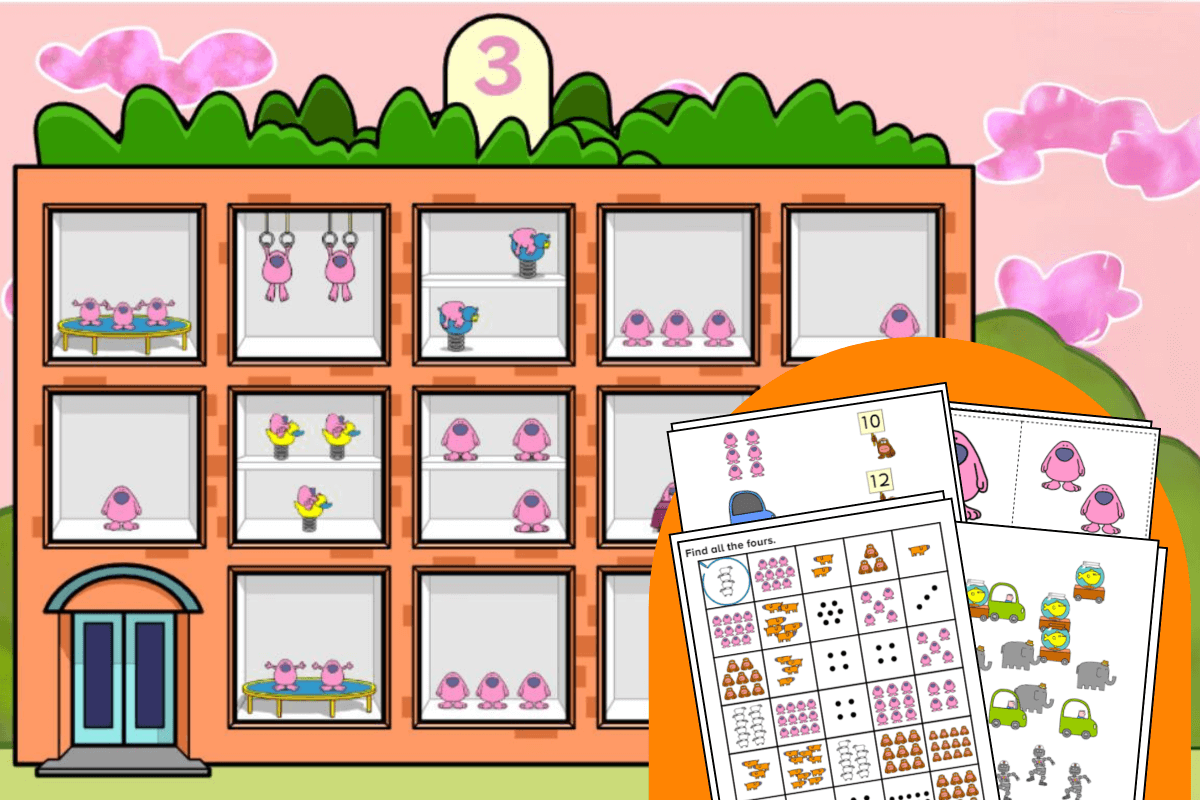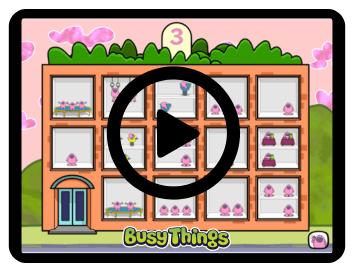What is Subitising? A Parent’s Guide incl. FREE Subitising Worksheets

Have you heard of subitising? In this blog we’ll demystify the concept of subitising and equip you with practical tips to support your child in learning this vital early mathematical skill.
But first, let’s address the most common question: how do you pronounce subitising?! Subitising is pronounced “soo-bi-tie-zing”. Now, let’s dive in…
- What is subitising?
- Why is subitising important?
- Are there different levels or stages of subitising?
- How to help develop subitising skills at home
- Subitising activity ideas
- Free subitising practice worksheets
What is Subitising?
Don’t worry, subitising may sound like yet another new concept to wrap your head around but this one is very simple! We promise.
In fact, you may not have heard the term before but, you most probably already possess this math superpower and use it every day without even realising it!
Imagine looking at a dice and immediately knowing it shows five dots, or glancing at a handful of sweets and instantly recognising that there are eight. That’s subitising in action!
Put simply, subitising is the ability to instantly recognise the number of objects in a small group, without needing to count them.
Why is subitising important?
Subitising has recently taken the spotlight in early education as educators have discovered that mastering this skill early is like unlocking the secret sauce of math success for kids!
While it might be a new concept for us parents, subitising is quickly becoming a must-have skill for our little learners.
By recognising and understanding the quantity of small groups of objects without counting them one by one, your child develops what’s called ‘number sense’ – an intuitive grasp of numbers that paves the way for mastering more complex math skills like addition, subtraction, multiplication, and problem-solving.
Moreover, subitising enhances children’s spatial awareness and visual perception; crucial cognitive skills for their overall development.
In short, being able to subitise not only boosts your child’s confidence in math but also sets them up for success in their academic journey. Plus, it makes everyday tasks, like sharing snacks or sorting toys, a whole lot easier and more fun!
Are there different levels or stages of subitising?
Subitising skills evolve in stages, like unlocking levels in a game, guiding children towards a strong number sense. Initially, they rely on visual cues—like spotting dot patterns on dice—to grasp quantity.
As they level up, children start recognising larger numbers and spotting patterns within them, such as grouping by twos or threes. This advancement turbocharges their ability to quickly identify quantities without the hassle of counting each item.
As their spatial awareness levels up, they become subitising superheroes, able to spot quantity even when objects are in irregular patterns or scattered.
Subitising skills are like the secret ingredient for mastering more advanced math concepts. Take addition, for example: a child sees a group of two dots and another group of three dots, and instantly knows it’s five dots—no counting required! And subtraction? Piece of cake. Just remove a couple of dots from the five, and presto! They can see they’ve got three left.
Kids further level up their math game by understanding multiplication as repeated addition. When they come across three groups of two dots each, they quickly realise it’s six dots in total. And division? They can easily split the six dots into groups.
This math superpower is all about turning numbers into fun challenges and helping children unleash their inner math whiz!
How to help develop subitising skills at home
Encouraging the development of subitising skills in your child doesn’t have to be a daunting task—it’s all about turning everyday moments into fun learning opportunities! Here are some simple yet effective ways to incorporate subitising into your child’s daily routine:
- Guessing games – Engage your child in guessing games like “How many fingers am I holding up?” or “How many objects can you see in this picture?” This encourages quick recognition of small quantities without counting.
- Sorting toys into groups – Take advantage of playtime (or tidy-up time!) by sorting toys into groups based on colour, shape, or size. This activity helps children identify patterns and group objects visually.
- Spotting patterns in nature – Explore the natural world together and point out patterns, such as the arrangement of spots on a ladybird or the petals on a flower. Encourage your child to observe and recognise these patterns without counting each individual item.
- Estimating – When shopping or going for a walk, encourage your child to estimate the number of items in a shopping basket or the number of steps to a destination. This helps develop their ability to quickly assess quantities without counting.
- Playing board games with dice – Board games that involve dice provide excellent opportunities for practice in a fun and interactive way. Encourage your child to quickly recognise the number of dots on the dice without counting.
By integrating these simple activities into your child’s daily life, you can help them develop and strengthen their subitising skills while making learning enjoyable and engaging.
Subitising activity ideas
Playing is the best way of learning! Here’s a few fun, easy, and engaging activity ideas to develop your child’s subitising skills..
How about a subitising scavenger hunt? Encourage your child to spot groups of things – birds, leaves, petals – and recognise their quantities without counting. It’s a fantastic way to blend outdoor exploration with mathematical discovery.
Create subitising flashcards together using everyday items like buttons, coins, or even LEGO bricks (or print the free pack at the bottom of this blog). Show your child the cards and challenge them to recognise the quantity without counting. You could add a timer to increase the challenge! This activity not only sharpens their math skills but also creates an opportunity for creativity.
Why not try playing a subitising game on Busy Things? Enjoy a variety of fun and educational interactive games to boost math skills.

Free Subitising Practice Worksheets
Dive into our collection of free printable worksheets designed to reinforce subitising skills in a fun and interactive way.
Here’s what’s included in our free math worksheets:
- Quantity Matching Worksheets: Challenge your child to match numbers to corresponding groups of objects. This activity helps reinforce the connection between numbers and quantities.
- Quantity Recognition Worksheets: Circle all the groups that represent a certain number. This exercise strengthens your child’s ability to recognise quantities at a glance.
- Subitising Flash Cards: Practise subitising up to 20 with our handy flash cards. These cards are great for quick practice sessions and on-the-go learning.
- Group Counting Worksheets: Can your child subitise how many objects are in each group? These worksheets encourage your child to count groups of objects without needing to count them individually.
All of these worksheets have been made using the math resource maker on Busy Things! If you’d like to make your own custom math worksheets take a free trial.
Don’t forget, you can also try playing Quantity Street for free on Busy Things too!
How to access your FREE subitising activities:
Download your free subitising printable PDF and start boosting your child’s math skills today!
Time to subitise!
We hope you now feel confident in knowing what subitising is and empowered to help your little learners smash this magical math skill. With a sprinkle of fun practice here and there, you’ll be amazed at how quickly those math skills grow – and don’t forget to celebrate every little victory along the way!
One Reply to “What is Subitising? A Parent’s Guide incl. FREE Subitising Worksheets”
I love learning new ways to strengthen number sense in EYFS